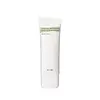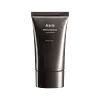What's inside
What's inside
 Key Ingredients
Key Ingredients

 Benefits
Benefits

 Concerns
Concerns

 Ingredients Side-by-side
Ingredients Side-by-side

Water
Skin ConditioningPropanediol
SolventEthylhexyl Salicylate
UV AbsorberHomosalate
Skin ConditioningDibutyl Adipate
EmollientGlycerin
HumectantCyclopentasiloxane
EmollientNiacinamide
SmoothingBis-Ethylhexyloxyphenol Methoxyphenyl Triazine
Skin ConditioningMethylene Bis-Benzotriazolyl Tetramethylbutylphenol
UV FilterPolysilicone-15
UV FilterDiethylamino Hydroxybenzoyl Hexyl Benzoate
UV FilterCamellia Sinensis Leaf Extract
AntimicrobialMesembryanthemum Crystallinum Extract
HumectantPolymethylsilsesquioxane
Mentha Viridis Extract
MaskingMentha Aquatica Extract
TonicMentha Rotundifolia Leaf Extract
TonicSodium Hyaluronate
Humectant1,2-Hexanediol
Skin ConditioningPentylene Glycol
Skin ConditioningPoly C10-30 Alkyl Acrylate
Emulsion StabilisingBehenyl Alcohol
EmollientVp/Eicosene Copolymer
Silica
AbrasivePolyglyceryl-3 Methylglucose Distearate
EmulsifyingTromethamine
BufferingButylene Glycol
HumectantDecyl Glucoside
CleansingCarbomer
Emulsion StabilisingAcrylates/C10-30 Alkyl Acrylate Crosspolymer
Emulsion StabilisingSodium Stearoyl Glutamate
CleansingEthylhexylglycerin
Skin ConditioningPolyacrylate Crosspolymer-6
Emulsion StabilisingAdenosine
Skin ConditioningSodium Polyacrylate
AbsorbentPropylene Glycol
HumectantPolyether-1
Xanthan Gum
EmulsifyingT-Butyl Alcohol
PerfumingWater, Propanediol, Ethylhexyl Salicylate, Homosalate, Dibutyl Adipate, Glycerin, Cyclopentasiloxane, Niacinamide, Bis-Ethylhexyloxyphenol Methoxyphenyl Triazine, Methylene Bis-Benzotriazolyl Tetramethylbutylphenol, Polysilicone-15, Diethylamino Hydroxybenzoyl Hexyl Benzoate, Camellia Sinensis Leaf Extract, Mesembryanthemum Crystallinum Extract, Polymethylsilsesquioxane, Mentha Viridis Extract, Mentha Aquatica Extract, Mentha Rotundifolia Leaf Extract, Sodium Hyaluronate, 1,2-Hexanediol, Pentylene Glycol, Poly C10-30 Alkyl Acrylate, Behenyl Alcohol, Vp/Eicosene Copolymer, Silica, Polyglyceryl-3 Methylglucose Distearate, Tromethamine, Butylene Glycol, Decyl Glucoside, Carbomer, Acrylates/C10-30 Alkyl Acrylate Crosspolymer, Sodium Stearoyl Glutamate, Ethylhexylglycerin, Polyacrylate Crosspolymer-6, Adenosine, Sodium Polyacrylate, Propylene Glycol, Polyether-1, Xanthan Gum, T-Butyl Alcohol
Water
Skin ConditioningCyclomethicone
EmollientZinc Oxide
Cosmetic ColorantGlycerin
HumectantButyloctyl Salicylate
Skin ConditioningPolyglyceryl-3 Polydimethylsiloxyethyl Dimethicone
Skin ConditioningIsododecane
EmollientCI 77891
Cosmetic ColorantCaprylyl Methicone
Skin ConditioningIsononyl Isononanoate
Emollient1,2-Hexanediol
Skin ConditioningTribehenin
EmollientChlorella Vulgaris Extract
Skin ConditioningCentella Asiatica Extract
CleansingChamomilla Recutita Flower Extract
MaskingHouttuynia Cordata Extract
Skin ConditioningAloe Ferox Leaf Extract
Skin ConditioningDisteardimonium Hectorite
StabilisingPolymethylsilsesquioxane
Sorbitan Sesquioleate
EmulsifyingMagnesium Sulfate
Triethoxycaprylylsilane
Ceresin
Emulsion StabilisingAluminum Hydroxide
EmollientGlucose
HumectantButylene Glycol
HumectantStearic Acid
CleansingFructooligosaccharides
HumectantFructose
HumectantPropylene Carbonate
SolventEthylhexylglycerin
Skin ConditioningGlyceryl Caprylate
EmollientPanthenol
Skin ConditioningWater, Cyclomethicone, Zinc Oxide, Glycerin, Butyloctyl Salicylate, Polyglyceryl-3 Polydimethylsiloxyethyl Dimethicone, Isododecane, CI 77891, Caprylyl Methicone, Isononyl Isononanoate, 1,2-Hexanediol, Tribehenin, Chlorella Vulgaris Extract, Centella Asiatica Extract, Chamomilla Recutita Flower Extract, Houttuynia Cordata Extract, Aloe Ferox Leaf Extract, Disteardimonium Hectorite, Polymethylsilsesquioxane, Sorbitan Sesquioleate, Magnesium Sulfate, Triethoxycaprylylsilane, Ceresin, Aluminum Hydroxide, Glucose, Butylene Glycol, Stearic Acid, Fructooligosaccharides, Fructose, Propylene Carbonate, Ethylhexylglycerin, Glyceryl Caprylate, Panthenol
 Reviews
Reviews

Ingredients Explained
These ingredients are found in both products.
Ingredients higher up in an ingredient list are typically present in a larger amount.
1,2-Hexanediol is a synthetic liquid and another multi-functional powerhouse.
It is a:
- Humectant, drawing moisture into the skin
- Emollient, helping to soften skin
- Solvent, dispersing and stabilizing formulas
- Preservative booster, enhancing the antimicrobial activity of other preservatives
Butylene Glycol (or BG) is used within cosmetic products for a few different reasons:
Overall, Butylene Glycol is a safe and well-rounded ingredient that works well with other ingredients.
Though this ingredient works well with most skin types, some people with sensitive skin may experience a reaction such as allergic rashes, closed comedones, or itchiness.
Learn more about Butylene GlycolEthylhexylglycerin (we can't pronounce this either) is commonly used as a preservative and skin softener. It is derived from glyceryl.
You might see Ethylhexylglycerin often paired with other preservatives such as phenoxyethanol. Ethylhexylglycerin has been found to increase the effectiveness of these other preservatives.
Glycerin is already naturally found in your skin. It helps moisturize and protect your skin.
A study from 2016 found glycerin to be more effective as a humectant than AHAs and hyaluronic acid.
As a humectant, it helps the skin stay hydrated by pulling moisture to your skin. The low molecular weight of glycerin allows it to pull moisture into the deeper layers of your skin.
Hydrated skin improves your skin barrier; Your skin barrier helps protect against irritants and bacteria.
Glycerin has also been found to have antimicrobial and antiviral properties. Due to these properties, glycerin is often used in wound and burn treatments.
In cosmetics, glycerin is usually derived from plants such as soybean or palm. However, it can also be sourced from animals, such as tallow or animal fat.
This ingredient is organic, colorless, odorless, and non-toxic.
Glycerin is the name for this ingredient in American English. British English uses Glycerol/Glycerine.
Learn more about GlycerinPolymethylsilsesquioxane is a silicone used as a film forming agent.
When applied to the skin, this ingredient creates an invisible film on the surface. This film still allows oxygen to pass through, but prevents moisture from escaping. This can help condition and hydrate the skin. It also leaves a silky feel when applied.
Polymethylsilsesquioxane has not been shown to clog pores. It has been deemed safe to use up to 55%, but most cosmetics use much less.
If you have concerns about using this ingredient, we recommend speaking with a professional.
Learn more about PolymethylsilsesquioxaneWater. It's the most common cosmetic ingredient of all. You'll usually see it at the top of ingredient lists, meaning that it makes up the largest part of the product.
So why is it so popular? Water most often acts as a solvent - this means that it helps dissolve other ingredients into the formulation.
You'll also recognize water as that liquid we all need to stay alive. If you see this, drink a glass of water. Stay hydrated!
Learn more about Water